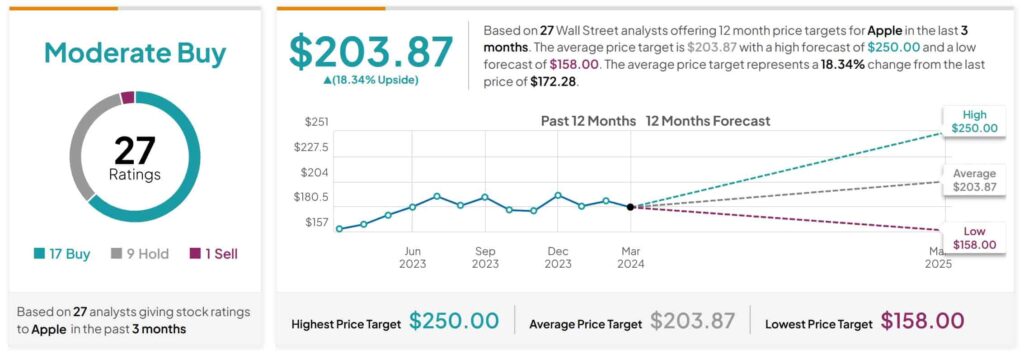Jim Cramer is a highly polarizing figure on the investing scene. Somewhere between a financial expert and a prime-time TV personality, Cramer has built a reputation as a dynamic, boisterous, and controversial advisor to the average American investor. Furthermore, he has written a dozen investment books and used his influence to communicate both prophetic and terrible investing advice throughout his enduring media presence.
Cramer also founded and managed his own hedge fund, which he claims delivered an average annual return of 24% over 14 years, although some dispute such claims. Today, due to a conflict of interest, he limited his portfolio management to a charitable trust. This article will review Jim Cramer’s stock portfolio as well as his largest stock holding and the logic behind such an investment.
Jim Cramer hedge fund returns
After several years of informal and indirect involvement in the investing market, Jim Cramer started his own hedge fund called Cramer & Co. (later renamed Cramer, Berkowitz & Co.) and actively managed it from 1987 to 2000. He pocketed 20% of the profits his management made to investors and raised $450 million in $5 million increments.

Cramer claimed his fund had a single year of negative returns, which was 1998. In 1999, the Jim Cramer fund returns amounted to 47%. The fund returned 28% in 2000, 35% above what the S&P 500 gave. Overall, Cramer boasted an average annual return of 24% from 1987 to 2001, with his personal profits from the fund allegedly being “$10 million a year and more.”
Jim Cramer stock picks
The bodacious investor made predictions with various accuracy before, during, and after his direct stock exchange involvement.
For example, Cramer started studying stocks in the fourth grade, continued throughout high school, and started investing himself while attending law school. In fact, he made enough from trading to pay for his education.
After following his answering machine holdings and turning a profit, Martin Peretz, the owner of The New Republic, gave Cramer half a million dollars to invest. In two years, Jim Cramer returned him $150,000 in profit.
During his hedge fund management career, Cramer stated that he sold all of his stocks three days before the 1987 Black Monday, which caused global market crashes and a severe global recession.
However, Jim Cramer gave some pretty erroneous advice as well.
In 2000, near the peak of the dot-com bubble, the Mad Money investor advised buying technology stocks, implying a stock performance similar to that of 1999.
In a December 2006 interview, Cramer described various semi-legal and illegal activities hedge fund managers use to manipulate stock prices. He also approved these actions for hedge funds because it is “a very quick way to make money.” Cramer stated:
“A lot of times when I was short at my hedge fund … When I was positioned short—meaning I needed it down—I would create a level of activity beforehand that could drive the futures.”
– Jim Cramer
On March 11, 2008, on the brink of the 2007-2008 financial crisis, Cramer answered a viewer’s question about doubting Bear Sterns’ liquidity and “getting his money out of there” with: “Don’t move your money from Bear.” Three days later, the bank’s stock lost more than 50% in value on press coverage of a Federal bailout and $2/share takeover by JPMorgan Chase.
Inverse Jim Cramer ETF
In 2022, motivated by comments mocking Cramer’s stock recommendations, Tuttle Capital Management launched a fund aimed against Cramer’s investment suggestions. “SJIM”, or “Inverse Cramer”, bet against everything Cramer suggested on Mad Money and his X (formerly Twitter) account.
Inverse Jim Cramer ETF performance
Jim Cramer’s income
Due to his contractual obligations toward CNBC and potential conflict of interest, Jim Cramer has liquidated his own stock holdings. Today, his wealth comes from several different sources, including:
- The profits he made at his former hedge fund;
- Earnings from the two CNBC shows and the associated CNBC Investing Club;
- Fees for public speeches and appearances;
- Sales of his investment books.
Jim Cramer’s largest stock holding
Since he does not have a stock portfolio and does not own any shares directly, we can’t exactly speak of Jim Cramer’s personal stock portfolio. However, we can still talk about a stock that Jim Cramer favors the most right now: Apple (NASDAQ: AAPL).
Apple Inc. (NASDAQ: AAPL)
Why Apple? Well, its recent performance has seen better days, with both short- and long-term trends going into the negative. In fact, many technology stocks are currently outperforming Apple.
Furthermore, the U.S. Department of Justice has filed a lawsuit against Apple in order to shatter the suspected “smartphone monopoly,” citing Section 2 of the Sherman Act on March 21:
“Apple’s broad-based, exclusionary conduct makes it harder for Americans to switch smartphones, undermines innovation for apps, products, and services, and imposes extraordinary costs on developers, businesses, and consumers.”
The U.S. Justice Department’s explanation.
Due to the negative sentiment caused by the lawsuit, AAPL stock has suffered a further decline amid investors’ fears.
However, Jim Cramer is adamant in his beliefs that the company will win and that it is “the most innovative consumer product technology company ever” with “the highest customer satisfaction rate of any business on Earth.”
Recommended video: Apple is the most innovative consumer technology company ever, says Jim Cramer
Apple Inc. (Nasdaq: AAPL) is a global consumer technology leader and the second-largest public company by market capitalization. A worldwide recognized brand, Apple’s iconic smartphones, software, and digital consumer products and services are ubiquitously used around the globe.
The company, founded in 1976 by Steve Jobs, Steve Wozniak, and Ronald Wayne, is headquartered in Silicon Valley, California. Successfully integrating, optimizing, and streamlining both software and hardware products and services made it a brand with reputable legacy, huge customer base, and enormous share of the market.
The company’s portfolio includes iPhone, iPad, Mac computers, Apple WatchCloud, and services like iCloud, iTunes, Apple TV+, and Apple Music. It is one of the Big Five technology companies, along with Alphabet (NASDAQ: GOOGL), Amazon (NASDAQ: AMZN), Microsoft (NASDAQ: MSFT), and Meta (NASDAQ: META).
Apple stock is a component of the Nasdaq-100, DJIA, S&P 100, and S&P 500 indices. It trades on the NASDAQ under the AAPL ticker.
Apple stock price today
Apple stock price prediction 2025

| Metric | Value |
| Apple average price target | $203.87 |
| Apple high forecast | $250.00 |
| Apple low forecast | $158.00 |
| Apple change from the last price | 18.34% |
Jim Cramer stock portfolio
Apple is by no means the only stock Jim Cramer endorses. Here are five entries to the Jim Cramer stock portfolio that the Mad Money investor has recently forecast will go big:
- Nvidia (NASDAQ: NVDA);
- Microsoft (NASDAQ: MSFT);
- Alphabet (NASDAQ: GOOGL);
- Meta (NASDAQ: META);
- Abbot Laboratories (NYSE: ABT).
Who is Jim Cramer?
For those of you who don’t already know, Jim Cramer is a prominent and controversial investment commentator, financial author, and host of CNBC’s Mad Money.
Renowned for his eccentric, energetic, and direct delivery style, he provides “on-demand” investment advice and shares his insights about company performance, the stock market, and ongoing trends in the wider economy.

While he became prominent as a successful hedge fund manager, he quit the role due to a conflict of interest with his media brand, as he immersed himself in the role of the financial TV advisor.
His rapid, on-spot delivery, bold sentiments, and solid conviction have drawn polarizing responses from both the audience and financial experts. However, he remains an undisputably influential and significant player in the world of investment, shaping the public investing sentiment and providing guidance to individuals navigating the stock market.
Jim Cramer’s current investment portfolio – the bottom line
Jim Cramer has a long and controversial investing career, with numerous polarizing investment predictions that were both hit and miss. Although he does not hold a portfolio himself, at least not any that he can profit from, he has some pretty vocal investment opinions, together with fanfare and quirky sound effects on his show, Mad Money.
Recently, he’s been touting Apple as the stock to buy amid the ongoing Department of Justice lawsuit, but he has been a long-time supporter of the “Magnificent Seven” technology stocks–minus Tesla (NASDAQ: TSLA).
Time only can tell how successful Jim Cramer’s predictions can be, and history contains examples of either direction. However, whether you admire the investor or go “the opposite way,” no one can doubt that his opinions have a substantial echo and a firm influence on the average American (and global) public.
Disclaimer: The content on this site should not be considered investment advice. Investing is speculative. When investing, your capital is at risk.





